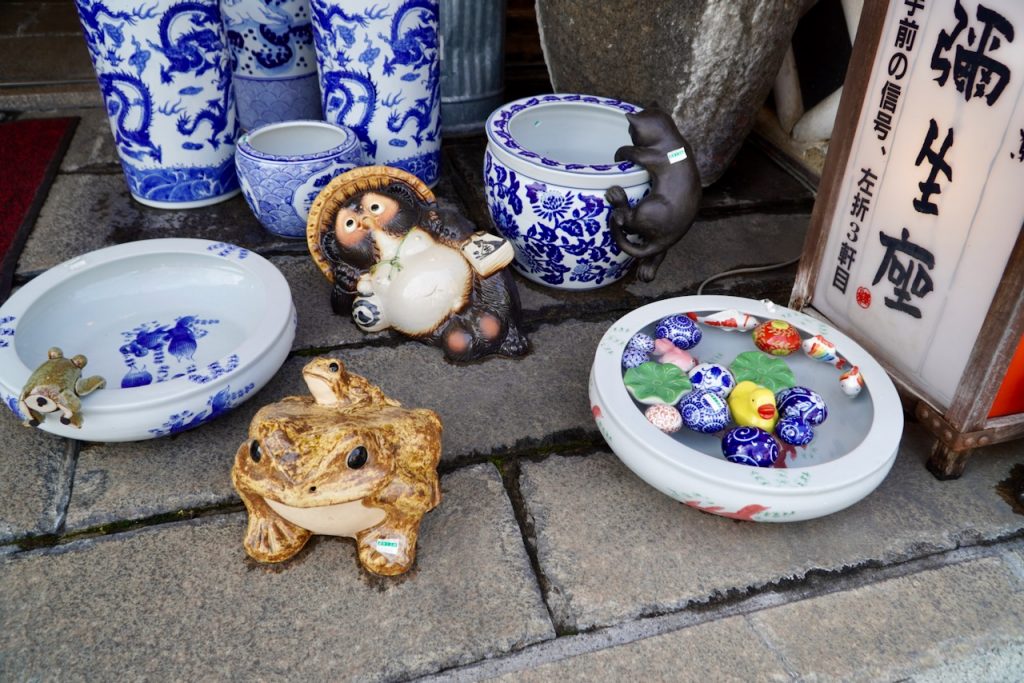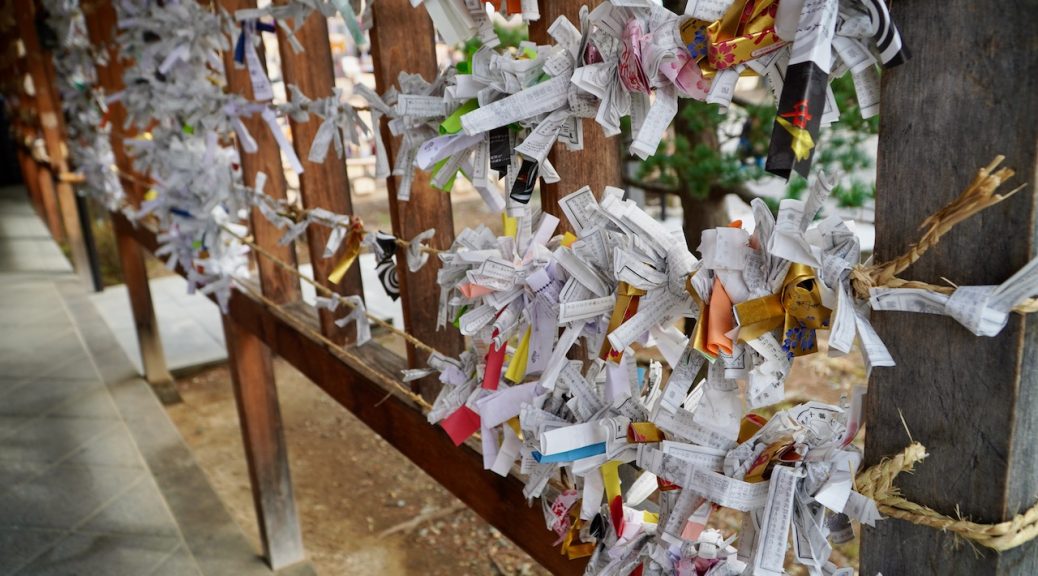
The oyaki fiends of Nagano
Rhett has picked his word to represent Japan: meticulous. Many shared public spaces that are designated as culturally important or world heritage sites are indeed meticulously maintained: a gardener going after weeds with a tiny tiny tweezers, sculptures and art are routinely cleaned with small brushes and utmost care, or someone trims grass in the shrines with a small small scissors. If you come in the fall, you can witness people picking fall leaves off of shrine grounds one at a time.
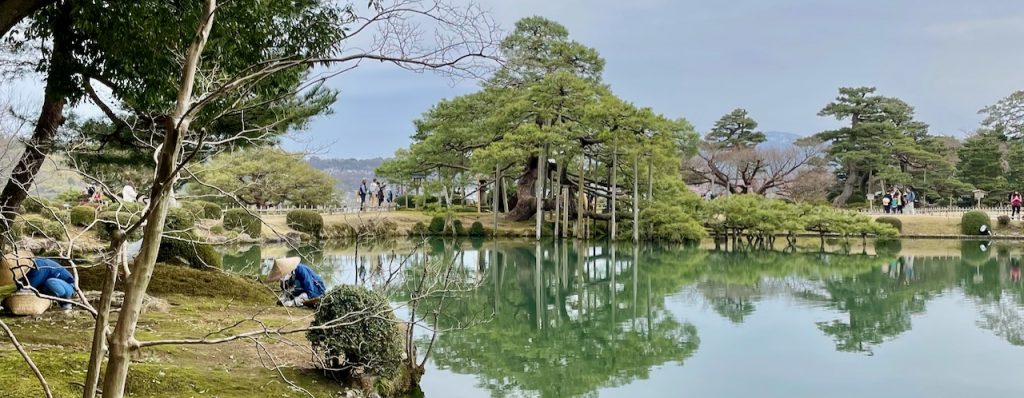
He isn’t wrong about the special places. Normal shops or homes are the same amount of clean as anywhere else – there are normal neighborhoods, there are run-down neighborhoods, there’s Saihoji’s impeccable moss fields, and there’s everything in between.
Anyway, here we are in Nagano: you’ve only heard of it from the Olympics (probably). It’s another smallish mountain city that the robots chose for us. It’s raining when we arrive. Aggressively raining.
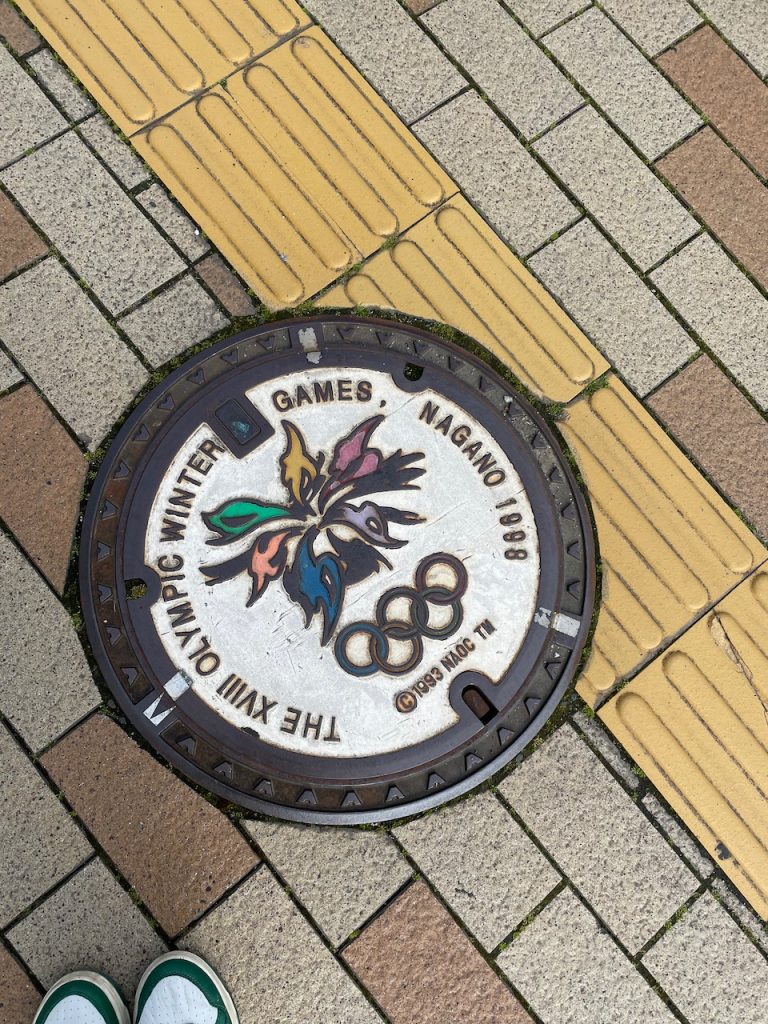
This is our first air bnb of the trip, since hotels have upped their amenities game and air bnbs without laundry are somewhat slim pickings, especially in smaller cities. This house is a traditional style Japanese home that happens to have no road access (I did not know this when I booked but I don’t care). It’s situated on a tiny triangle of land between two canals. The outside doesn’t look special, but the inside is immaculate.
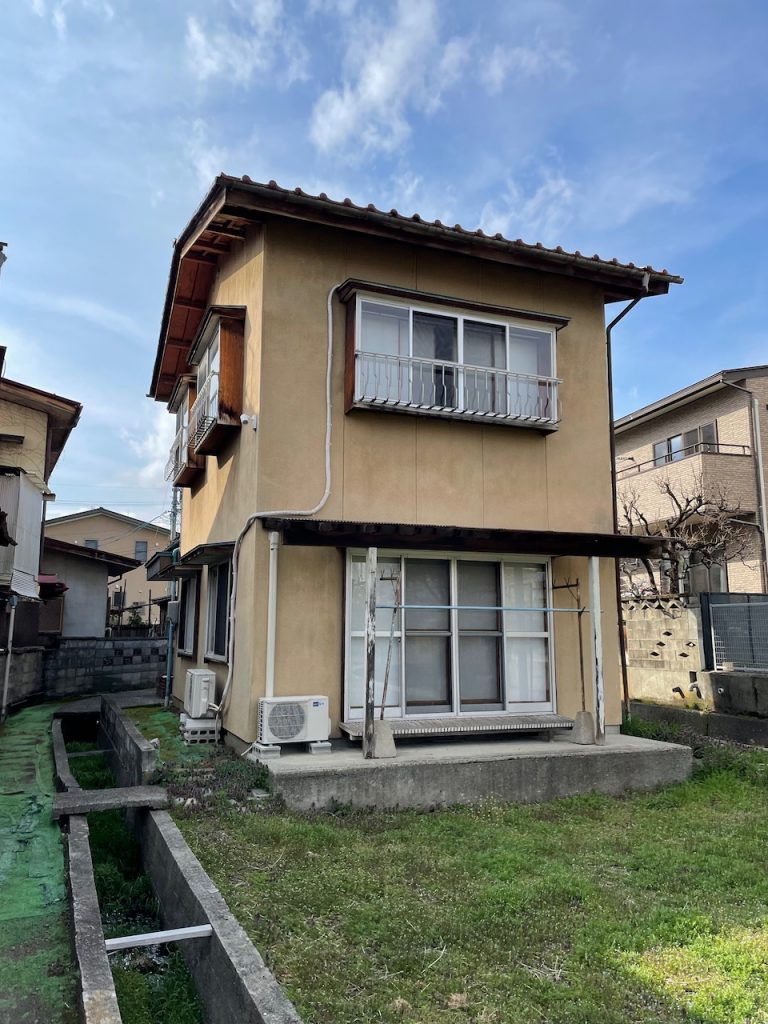
It has a kotatsu, beautiful woodwork, death stairs, and many spots for Rhett to bonk his head. It smells like sweet tatami and cypress. You can hear the trickle of one of the nearby streams constantly. Despite its weird location, I love it.
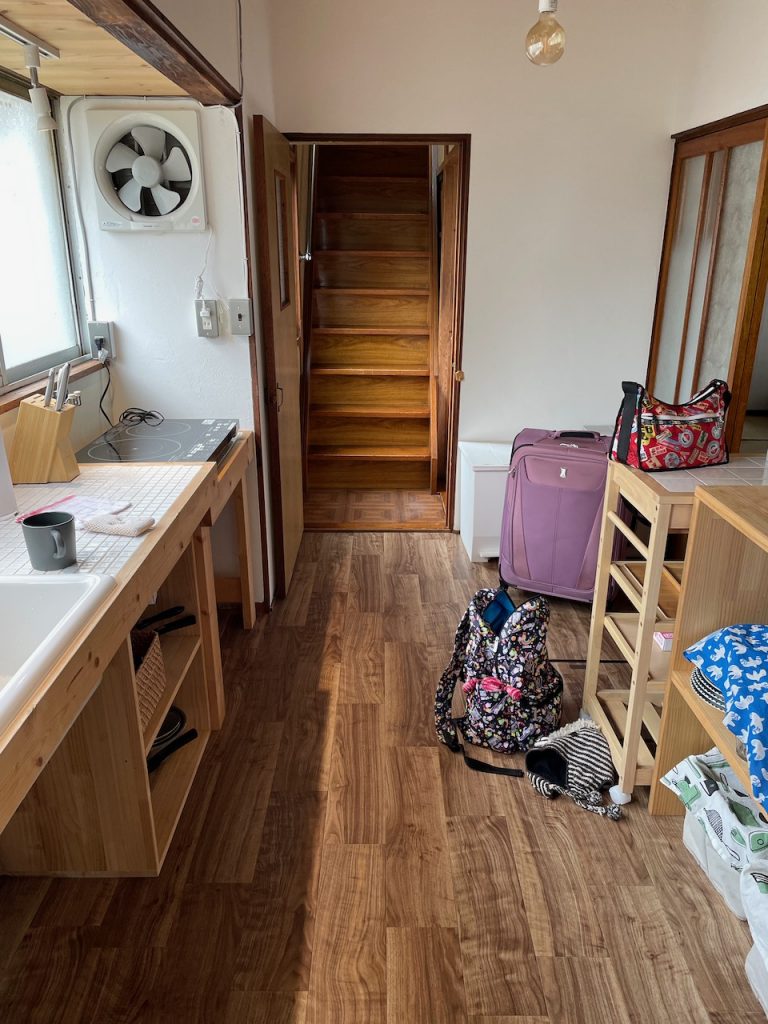
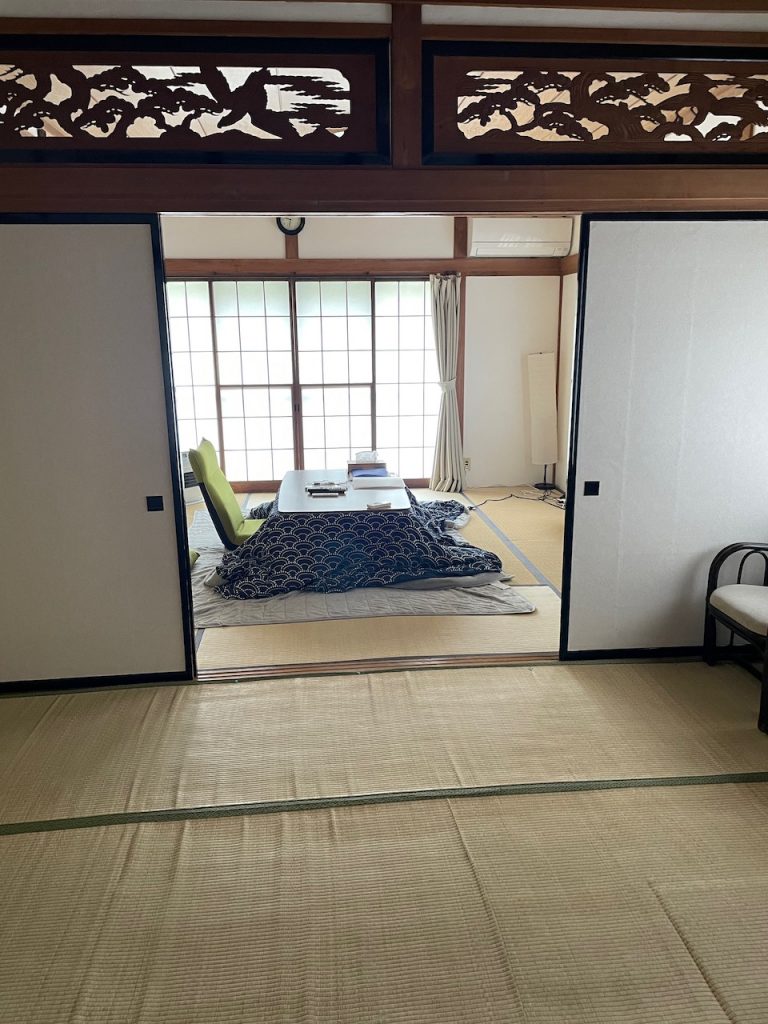
Rhett desires siesta. I desire Hokusai. I throw my things down and go back to the station to go to the Hokusai museum in Obuse. I take the electric rail, which still requires paper tickets (and you can buy them electronically with your IC card, for the ultimate electric rail irony). You hand your ticket to a dude and throw it in a basket when you get off and it’s really the honor system if you’re a foreigner because nobody speaks English well enough out here for that, and I won’t reveal my secret fluency.
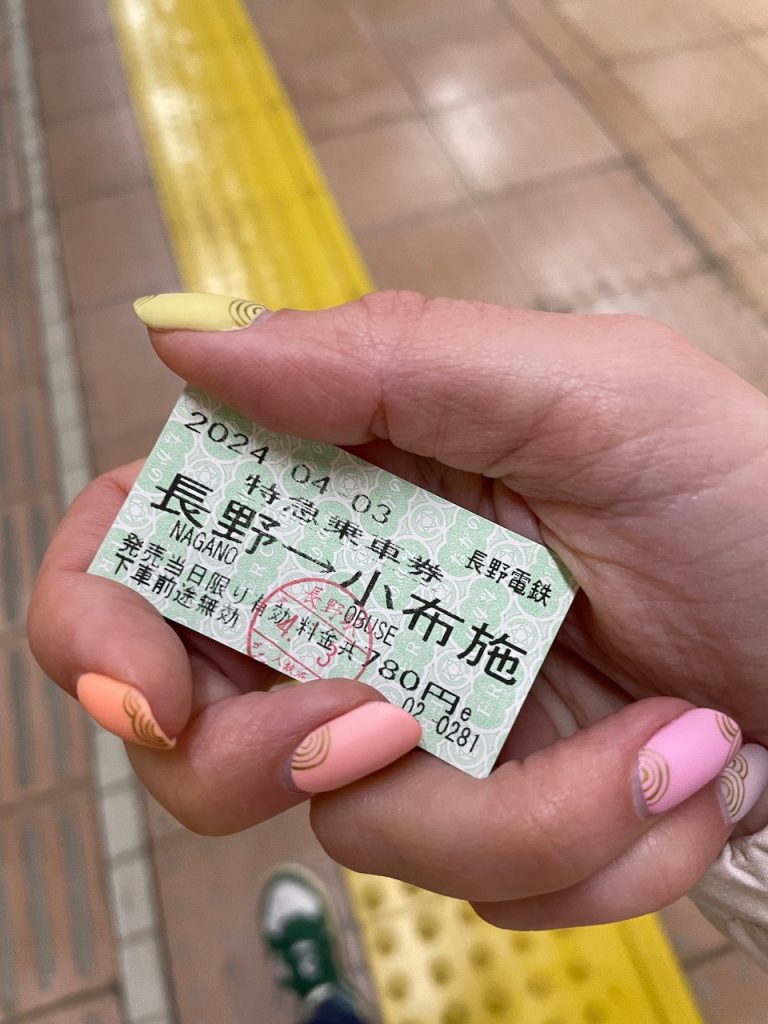
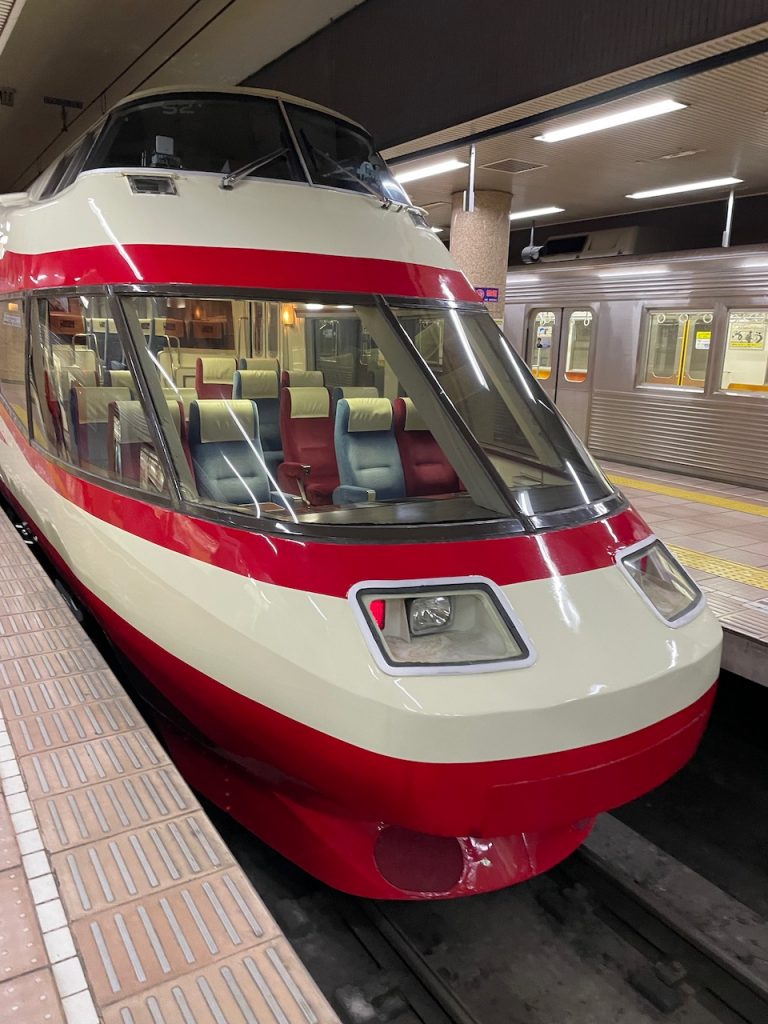
Nobody gets off at Obuse. This should be a sign to me, but it’s not, because sometimes I just refuse to see the signs. It’s more touristy-twee than I thought, and is also home to sake breweries. The streets have some hot pink cherry trees and are lined with little shops selling crafts and souvenirs. I put on my cuteness blinders and head to the Hokusai museum.
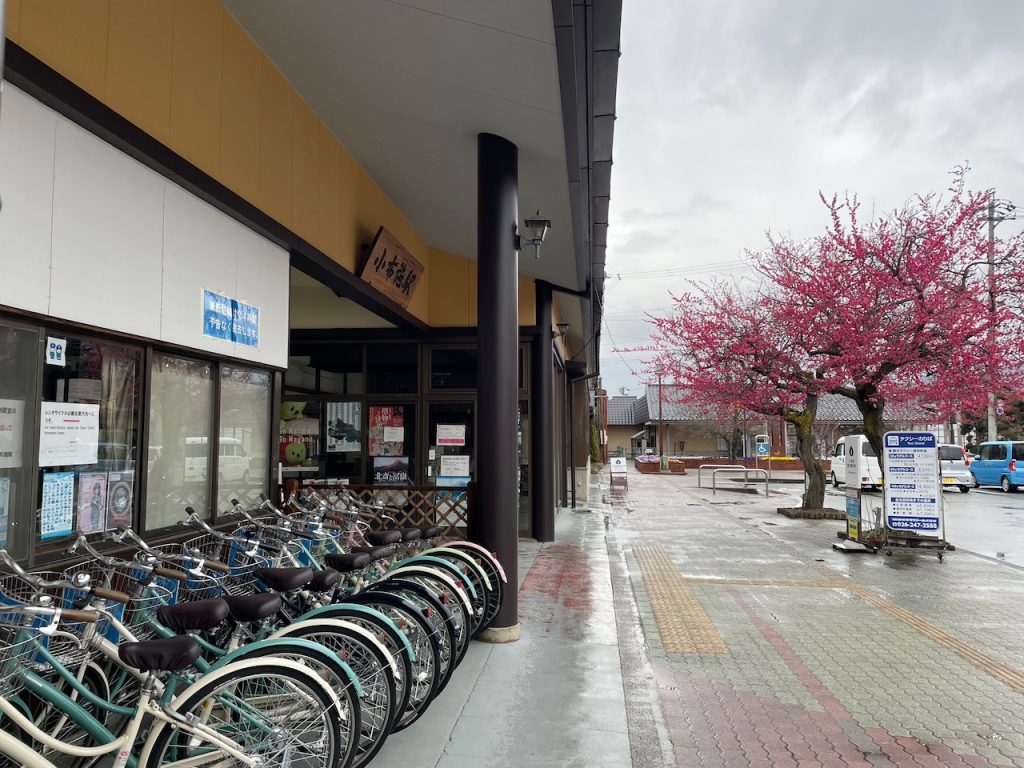
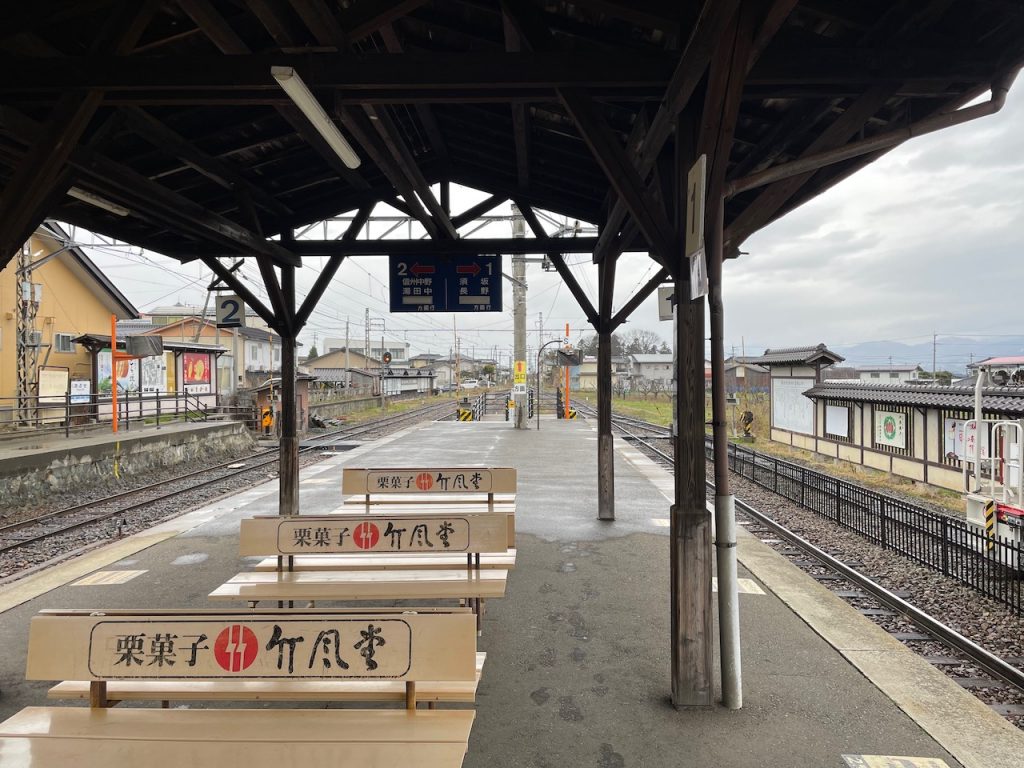
Alas, it is mostly shut down because they’re changing exhibits. The new exhibit opens on Saturday. I think today is Wednesday, but I’ve entered the part of vacation where the passage of time is a fugue and I don’t know what day it is. I check my phone and sigh. I still pay a small fee and go in to look at his sketches and the parade floats because I came all this way and the entrance amounts to three bucks (thank u weaksauce yen). The sketches on his process are interesting, since only his famous works are what you might see in museums.
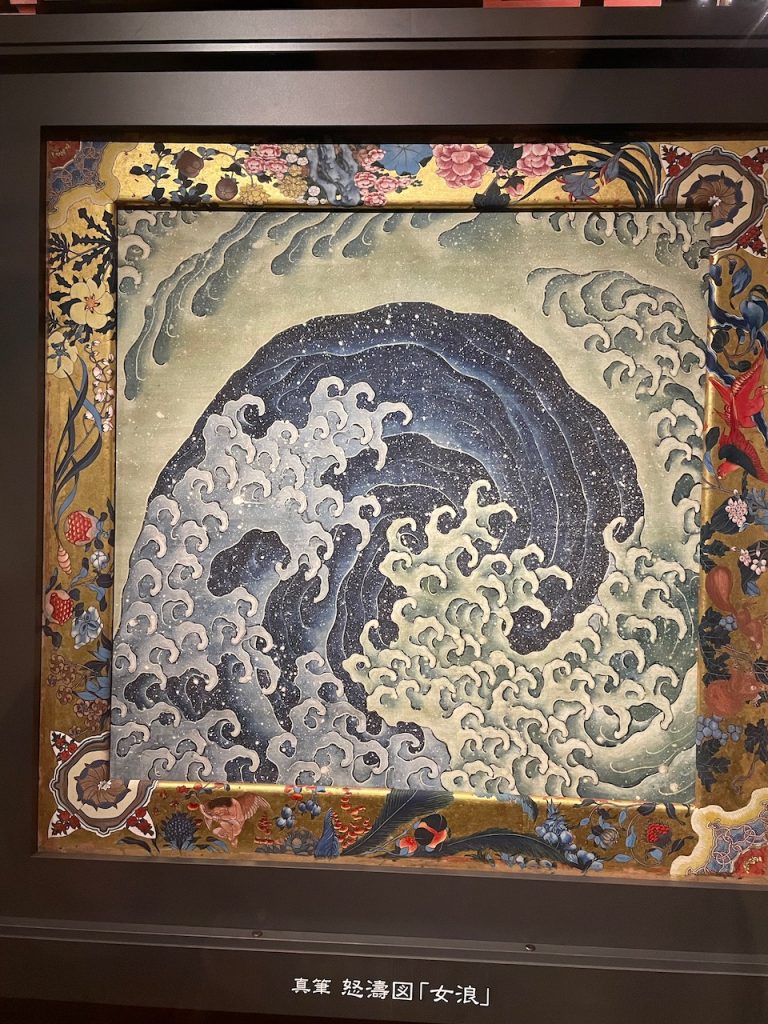
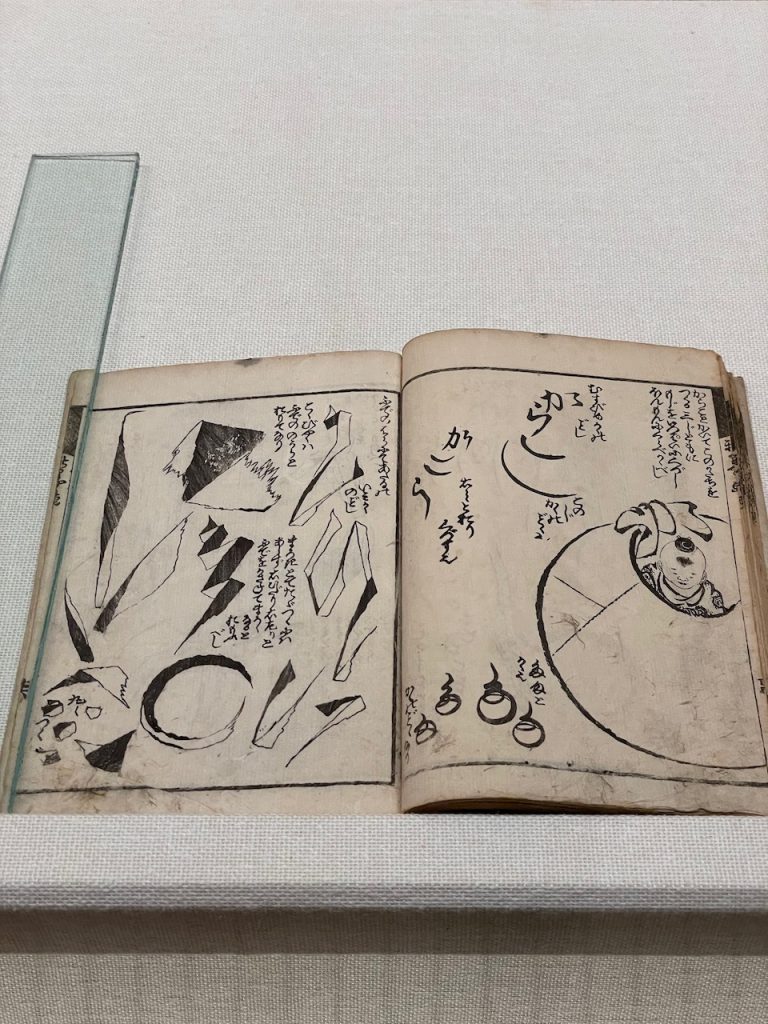
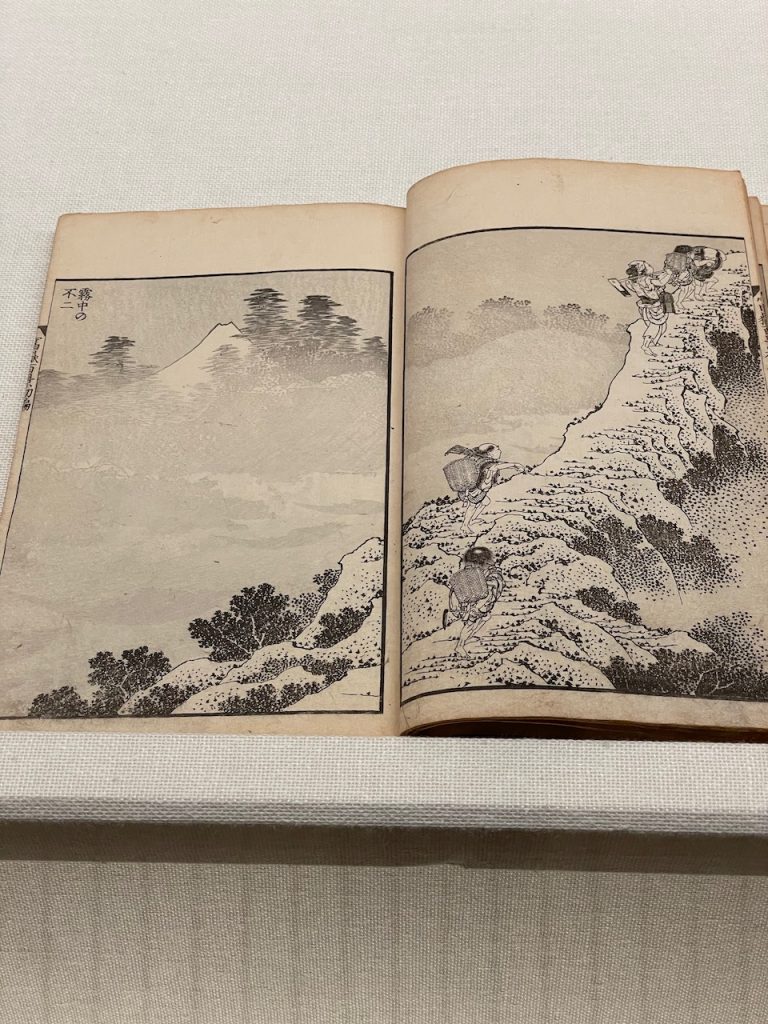
I wandered through the shops afterwards, poking through pottery and stationary and papercrafts and the sake breweries. It’s peaceful and pretty and worth the quick stop even with my hokusai sadness.
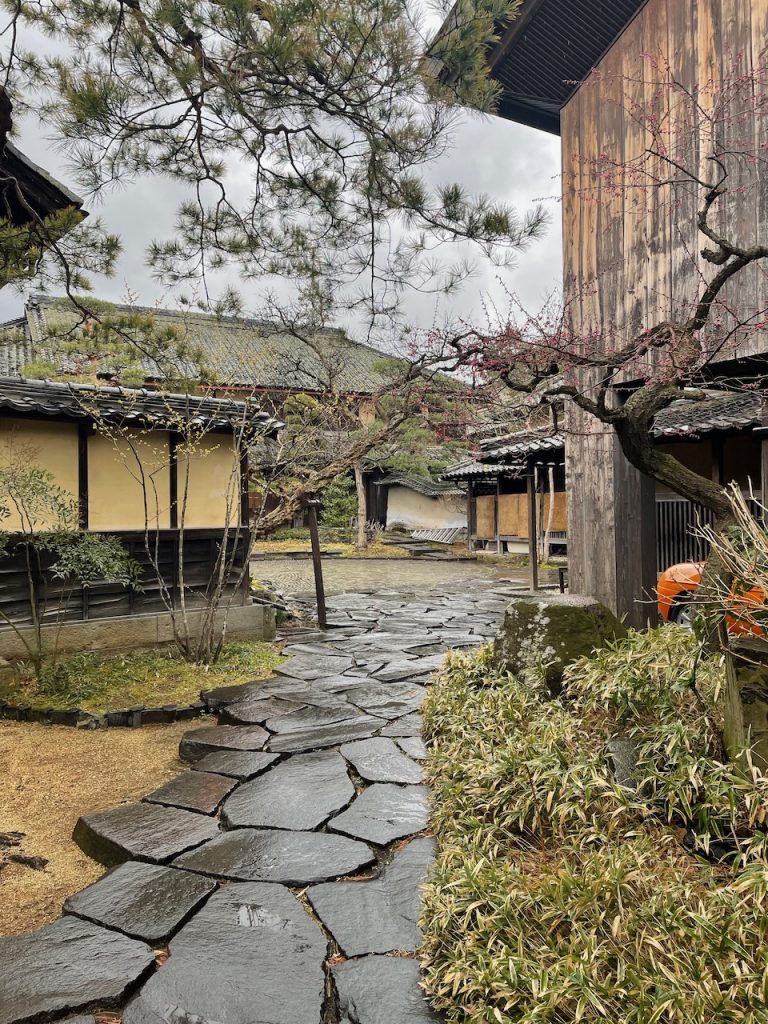
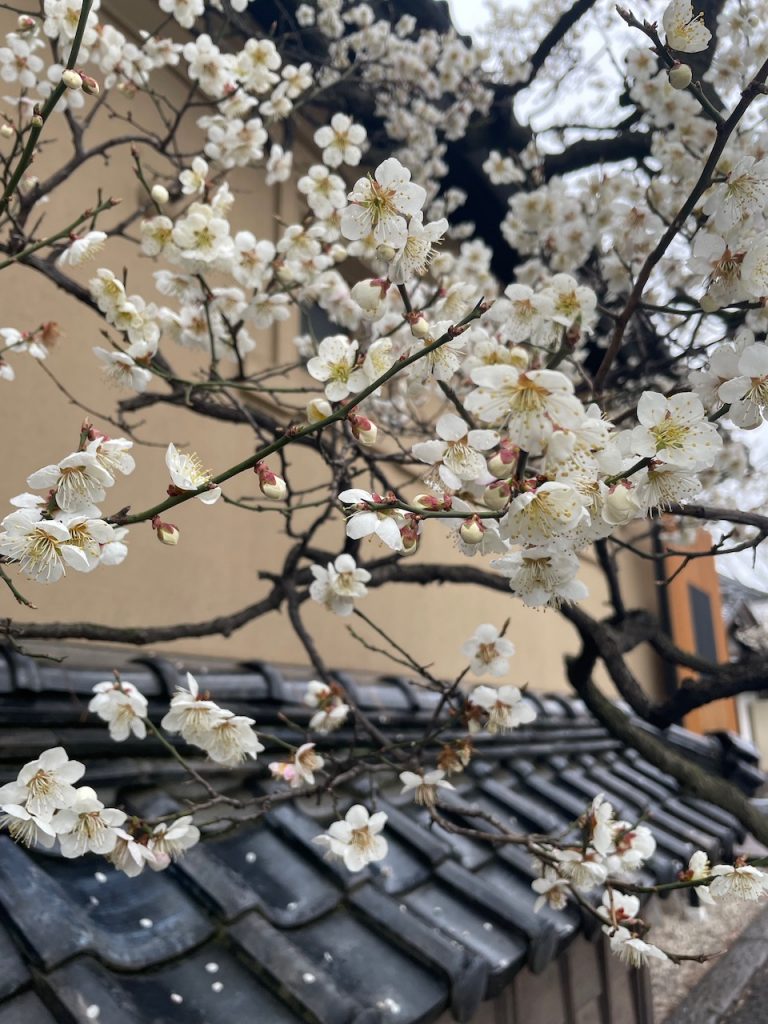
I moistly made my way home, origami paper in tow, and we went to the station to get soba, Shinshuu style. There’s so much soba up here – it’s made locally with the magical water and is considered a specialty. Shinshuu (信州) is the ancient name for this place, so lots of things with traditional-style food says Shinshuu on them. This soba place has real-ass wasabi that comes with our meals. It’s smoother and less watery and builds to a burn more slowly. Definitely a tasty treat. I ponder if I can smuggle some home.
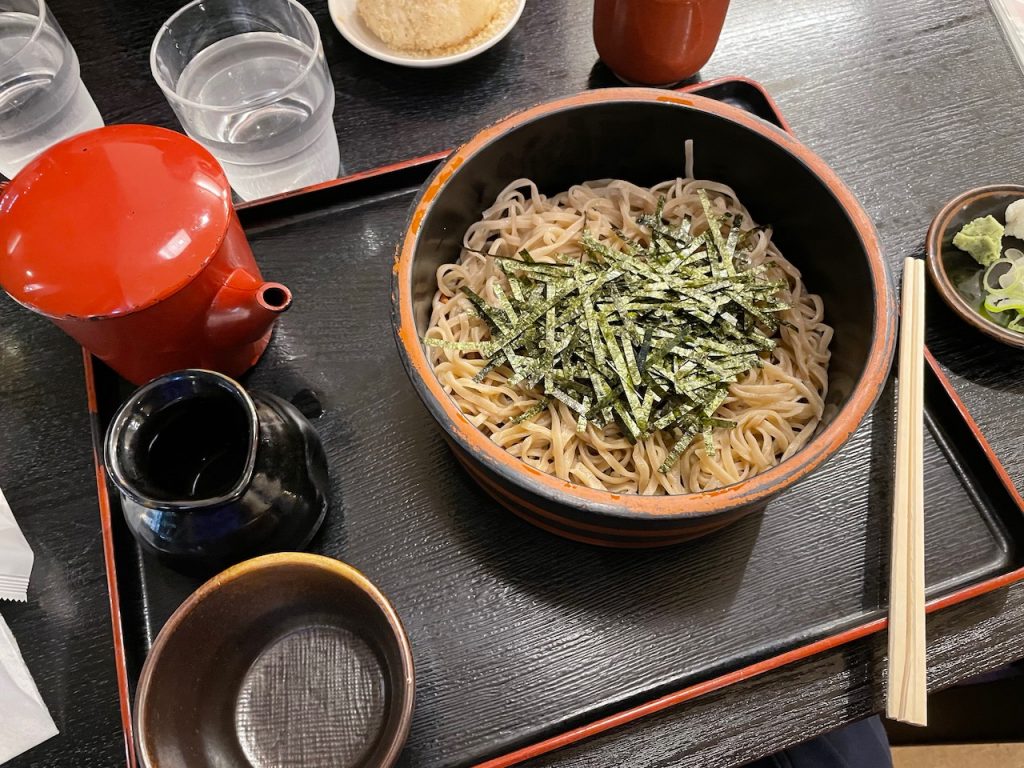
As we ate, we gazed upon the bastion that is a three-floor Don Quijote, aka Donki. If you’ve never been to Japan, Donki is similar to a huge Target but condensed infinitely, with music and ads blaring out at you at every turn. The aisles are high and claustrophobic. They sell crocs. They sell candy. They sell random electronics and home goods. They sell shoe deodorizer, which we desperately need because Rhett’s old tennis shoes smell like death when they’re wet. They still sell halloween costumes in April, which prompts me to tell him about the drunken adventures of Spiderman and Maid in Halloween 2012. (Spiderman and Maid drank too much and ate 50 gyoza between themselves in Shinjuku at 3am)
And before you gaze upon Donki’s photographic glory below, please know that my opinion of it is that this one is a VERY spacious donki. I am used to the shrine of consumption that is the Shibuya Donki.
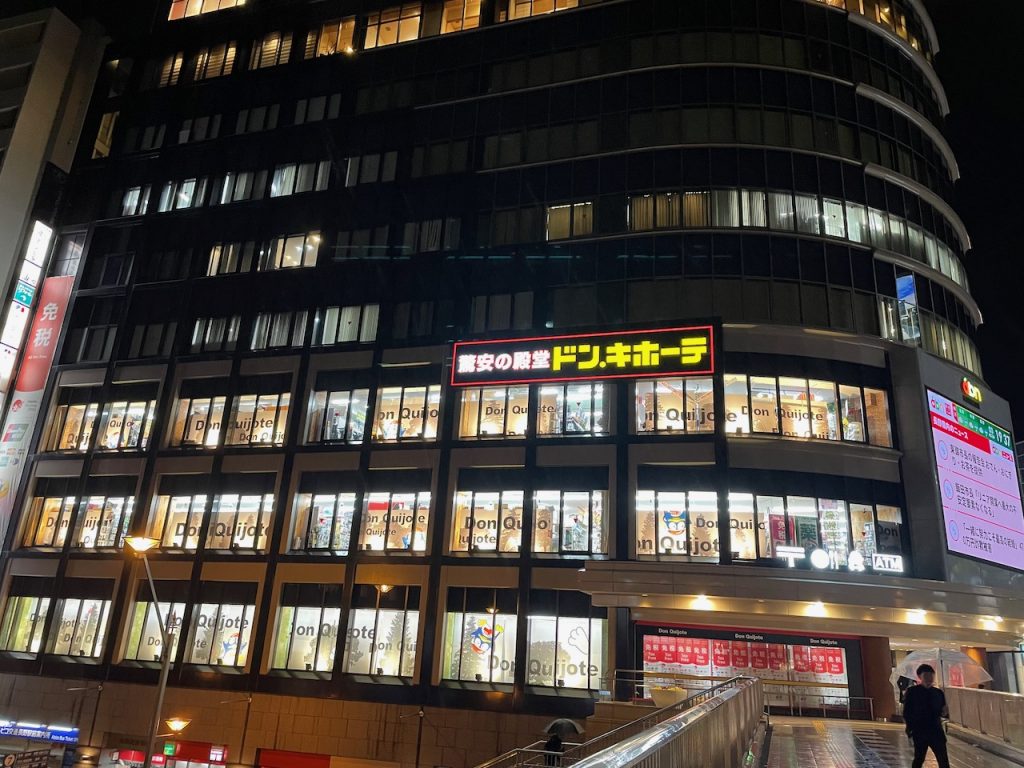
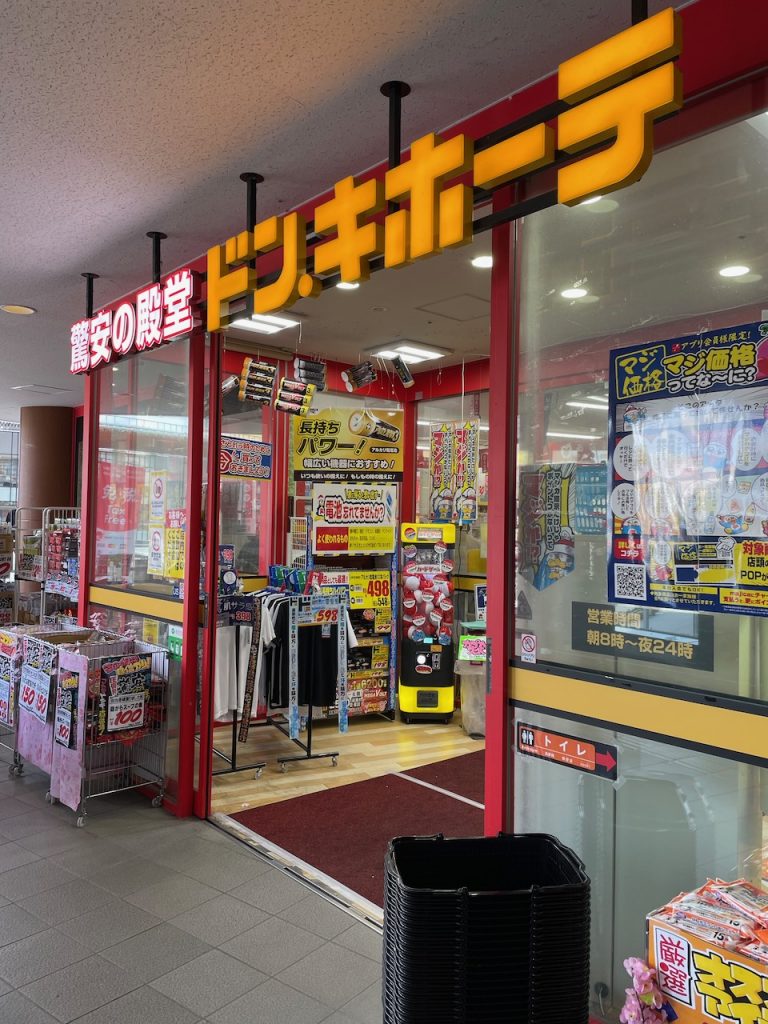
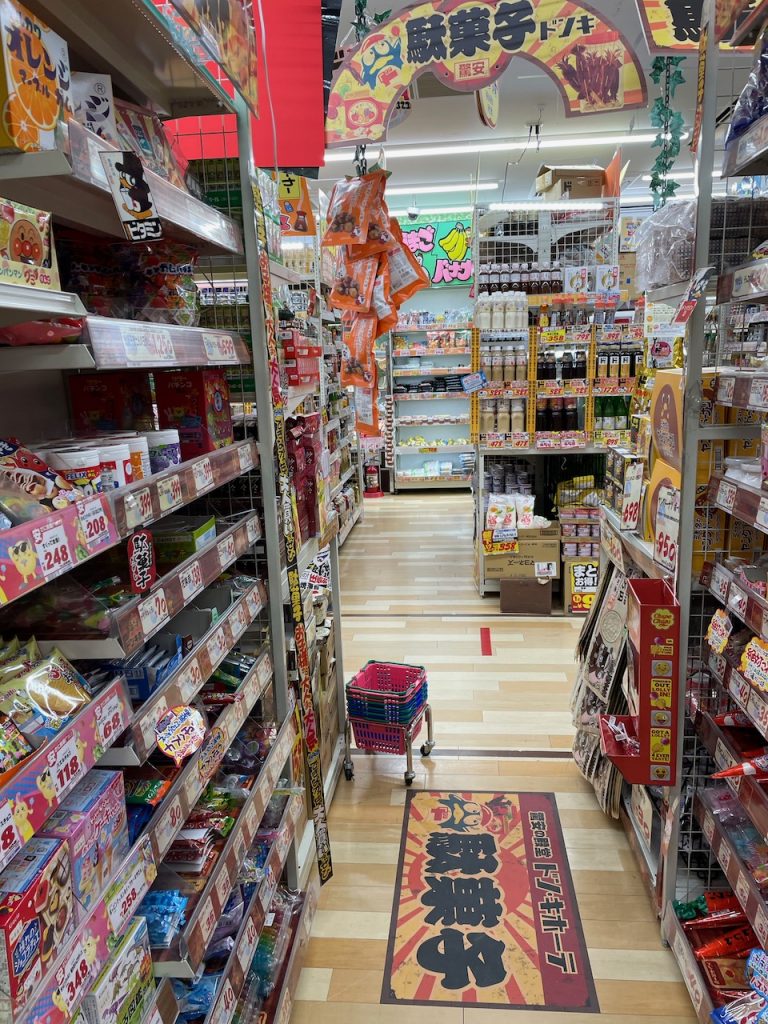
Rhett is overwhelmed but I think it grows on him. Just wait til we get to the Shibuya Donki. Just wait.
Our only full day in Nagano has no plan and fortunately also no rain. We go to Zenkoji, the parent temple of the place we did our temple stay in Takayama. Notable about the buddhism they practice at Zenkoji is their inclusiveness – the priesthood is not limited to just men. I’m not sure how far down the inclusiveness and acceptance rabbit hole it goes because Japan and my gender presentation fits in a more common box (white goblin cis woman), but they do claim to include all regardless of gender or orientation.
We get off the train and I think I have a good grip on my camera – as an anxious person who is good at dropping things, I have developed a militant routine to ensure I have a good grip on my camera.
This time, I did not. Just as we were stepping off, it slipped out of my hands and NEARLY into the train-platform crack. It bounces. I catch it. I say swears. The camera is ok and the only casualty is the lens cap. No cracks, it still works, all is well. Bless u Sony.
Now I will just need to find a store that carries camera supplies. But this is Japan, and camera shops are legion. We will find one.
Working camera in tow, we stop at a cafe for one of the local foods, oyaki. They’re small buns filled with vegetables. At long last, a vegetarian street food! We also bought a special spring flavored one, which is red bean wrapped in a leaf. It is a delicious stop.
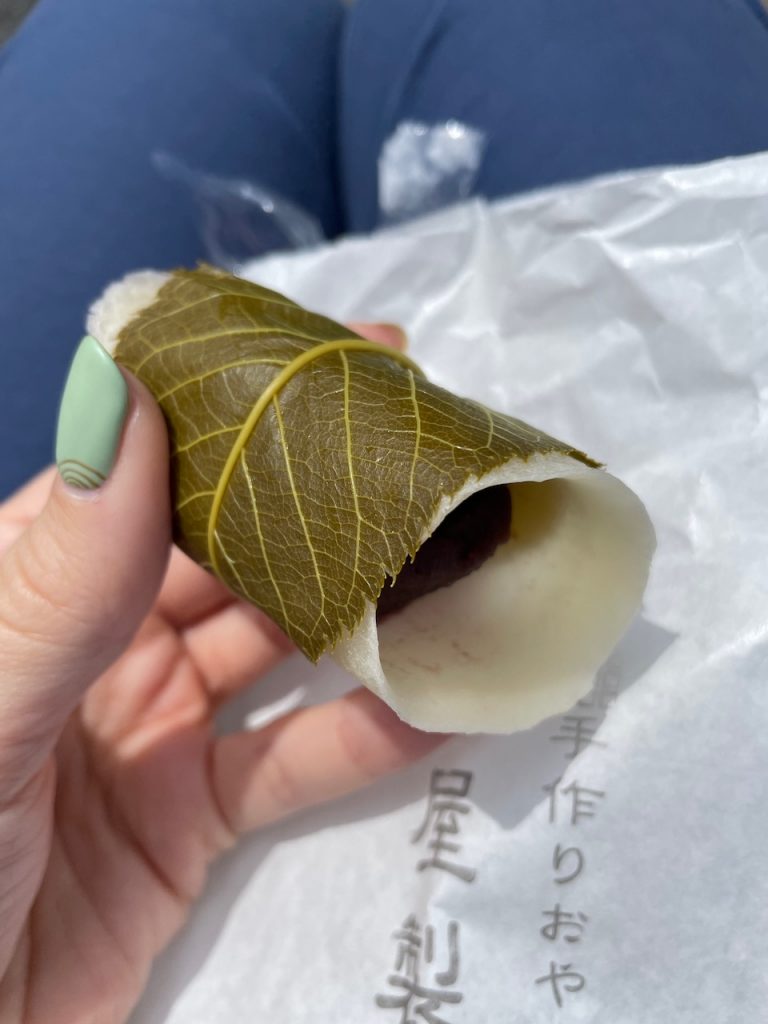
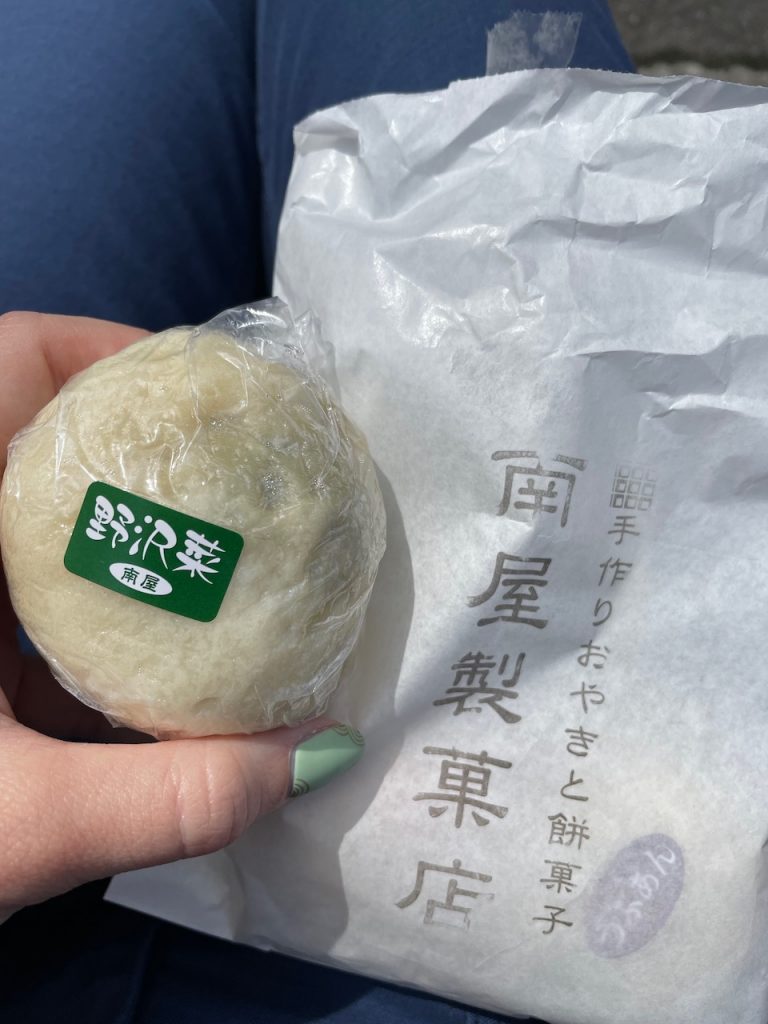
The road up to Zenkoji temple is dotted with street food vendors and shops and cafes. The food looks incredible. We will be back when we hunger more, but we are now full of oyaki.
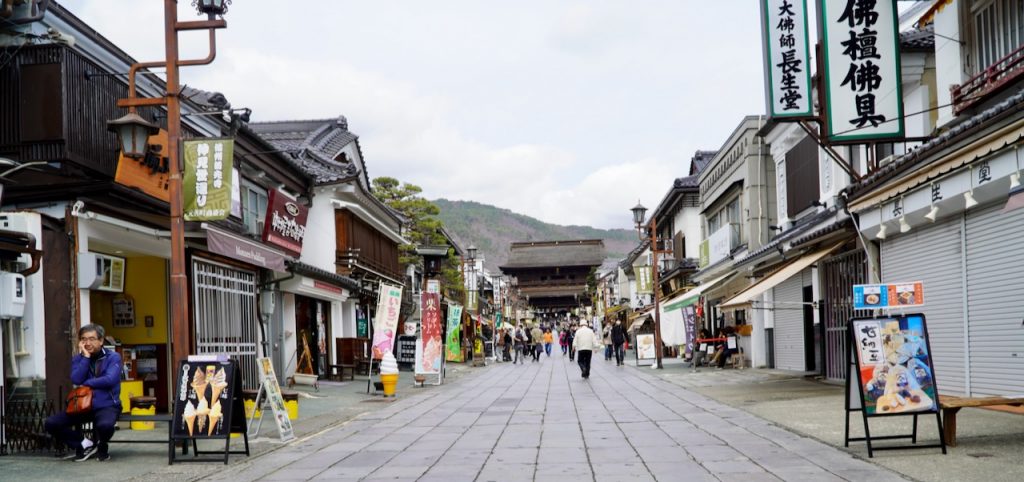
Zenkoji is a massive temple complex spread out just north of the central Nagano station. With your ticket, you can go into its many museums and climb up into the gate to look out at the city. The gate notably has death stairs which are even more murderous than the ones at our house. Children go up it and then they sit at the top and wait to be carried down one by one. Somehow, their mother does not die.
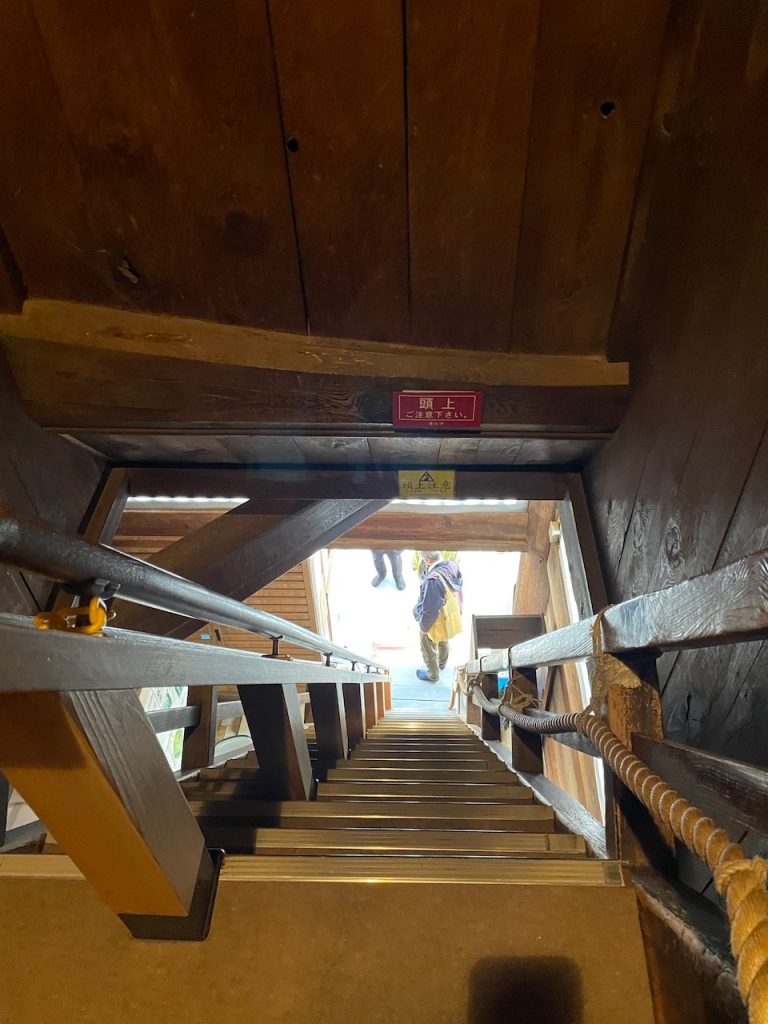
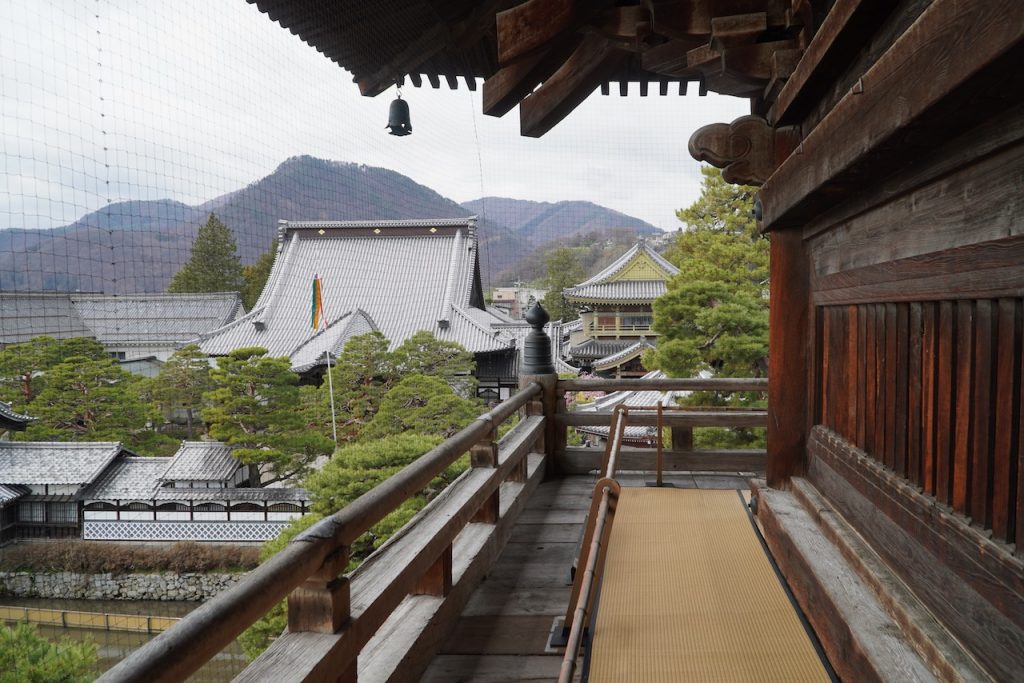
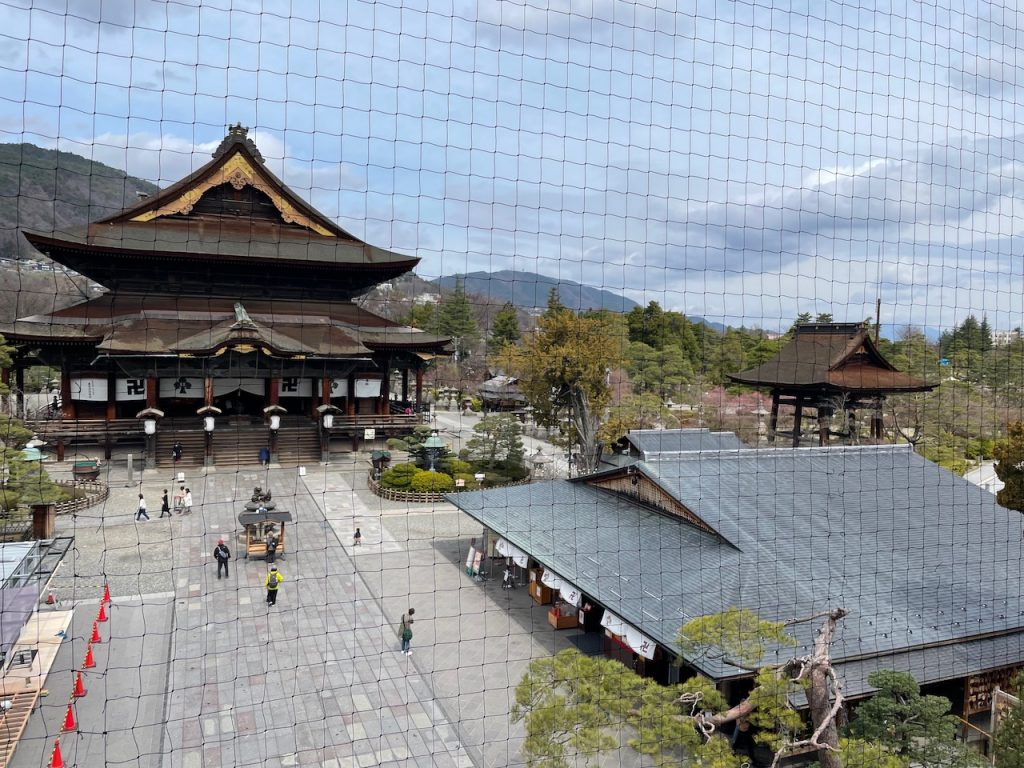
You can participate in a short prayer ceremony in the main building, followed by a walk through a pitch black tunnel beneath the temple. If you touch the key in the tunnel it’s said you will find salvation. I did this thing, shuffling through the darkness and hoping the thing I found was not a stubbed toe. I found the key and was at least saved from running into something. I’ll take it.
The grounds have beautiful gardens around and behind them, and are surrounded by your usual things you find at temples: senbazuru, places for your prayers and wishes, bad fortunes, and jizo. The lazy b cherry trees are starting to do their thing too.
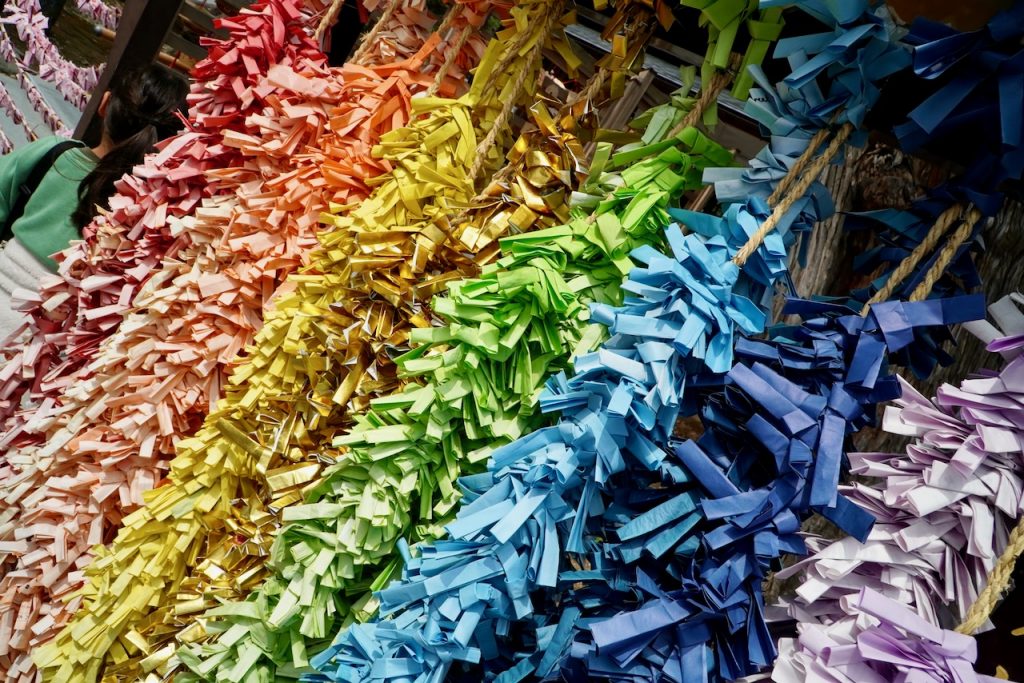
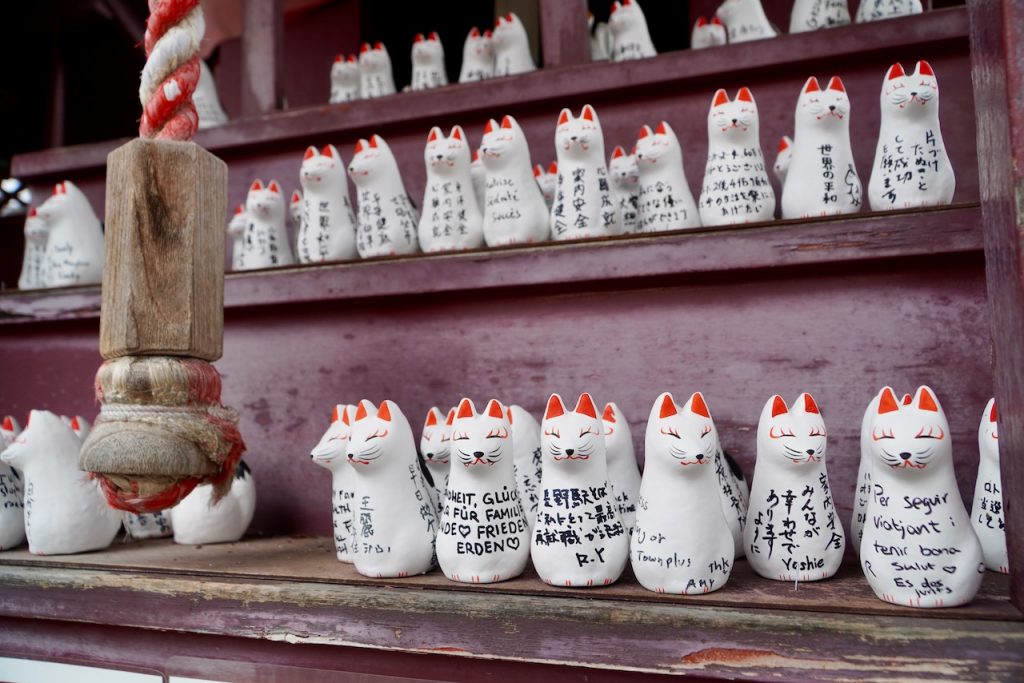
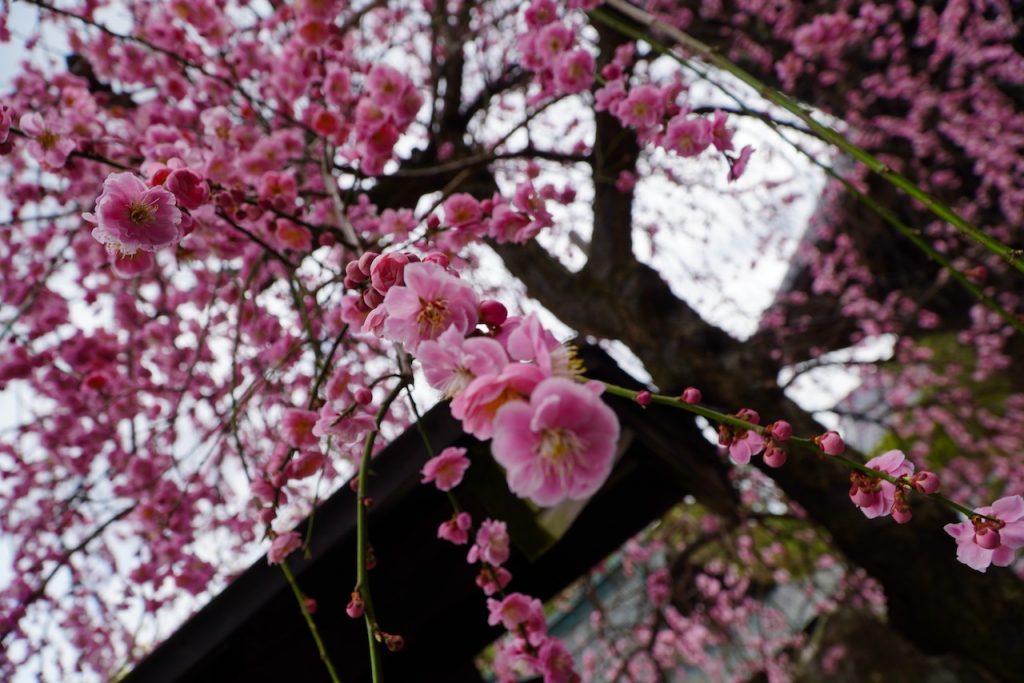
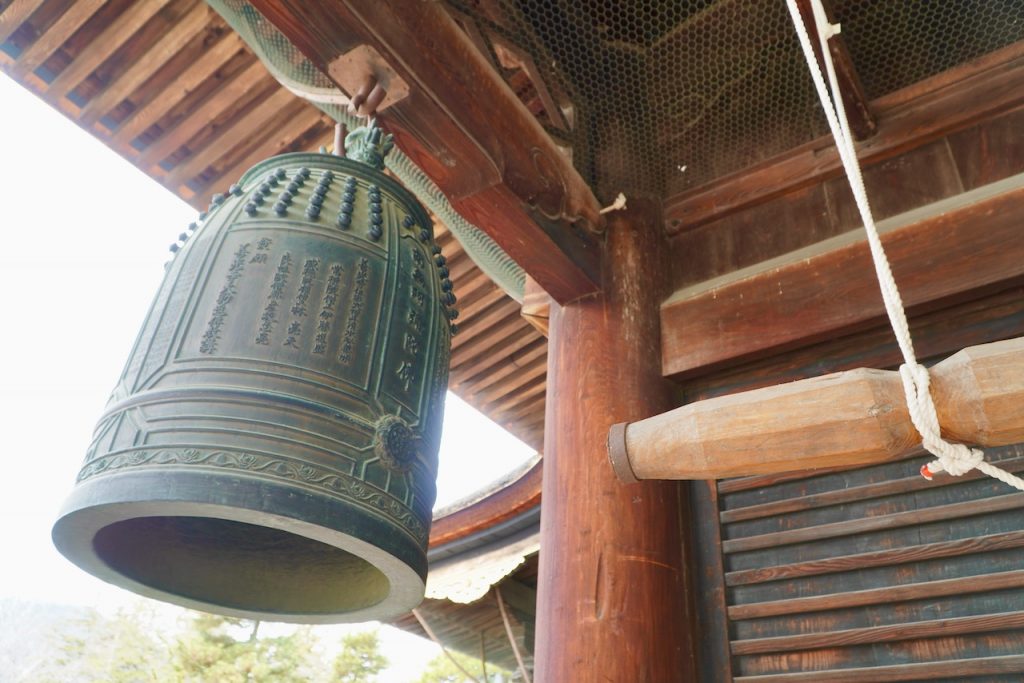
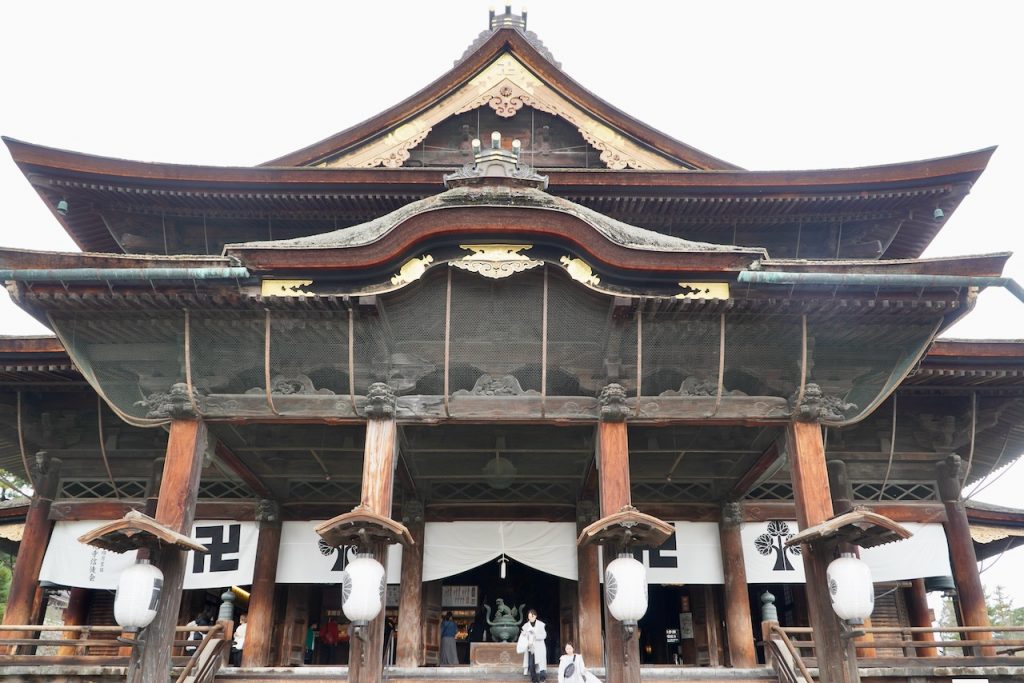
We mosey back to our house slowly, stopping for grilled oyaki a few times. Did I mention that these are almost all vegetarian?! Be still, my heart. The best one was cheese miso. Rhett tried a sweet apple one, made with local apples. It was similar to a mcdonald’s apple pie but with no cinnamon, and was far superior in quality.
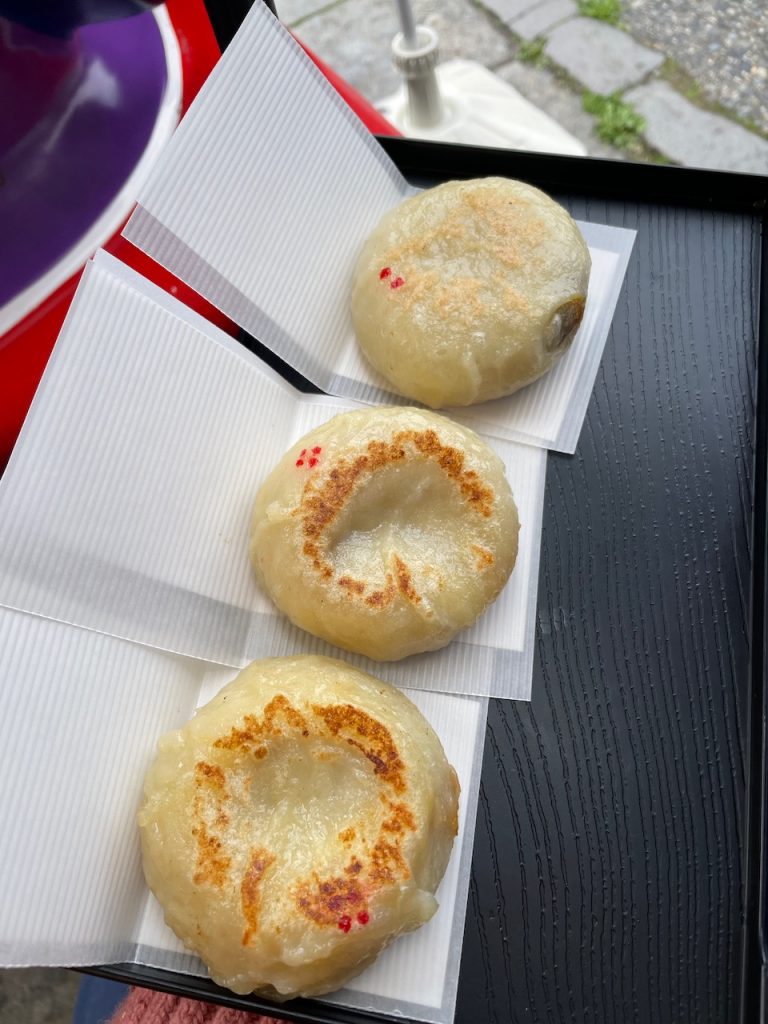
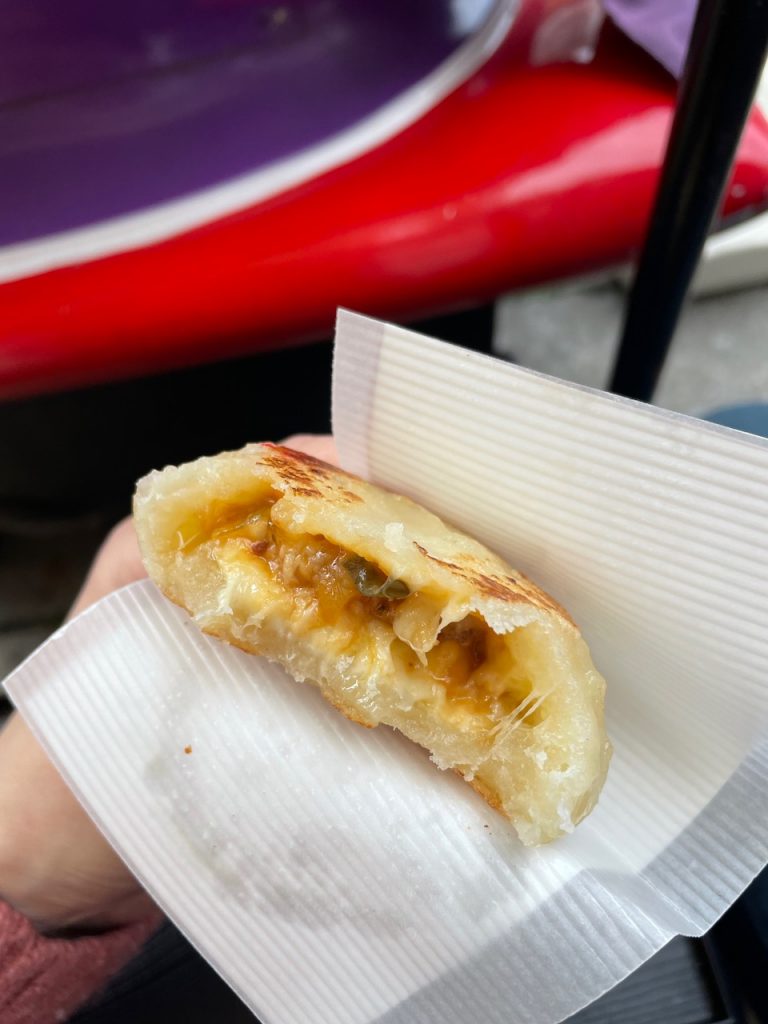
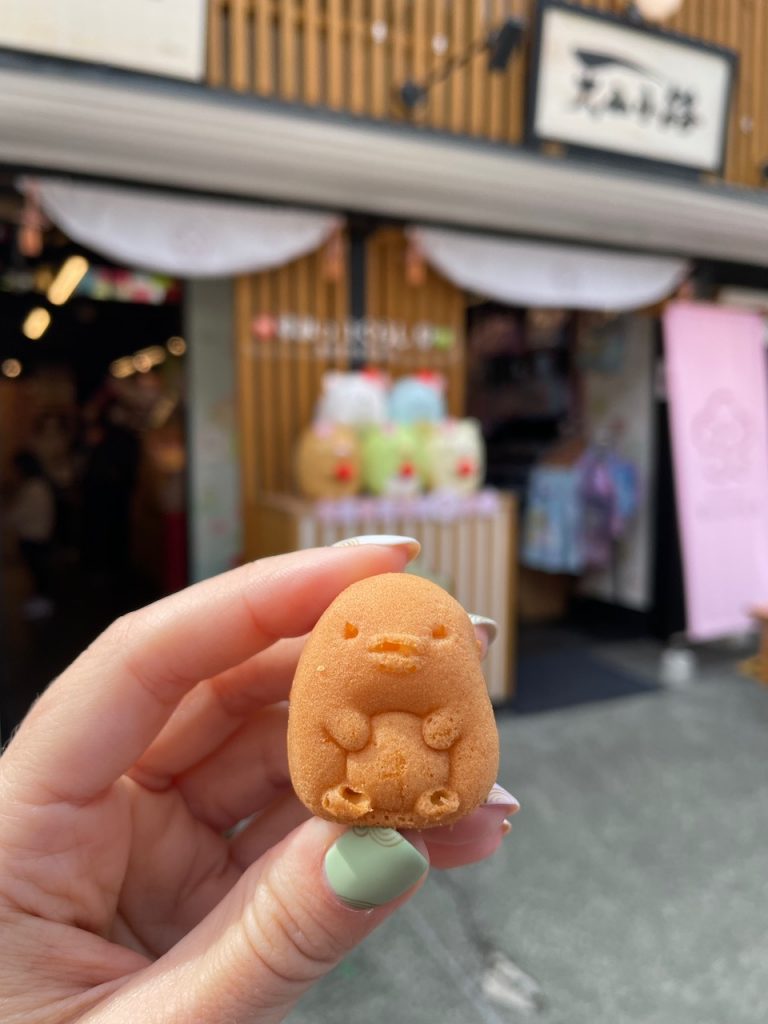
On the way to the camera stop and the station, we found a bakery that sells all kinds of melon bread. I got a matcha melon bread filled with matcha. It was our new child.
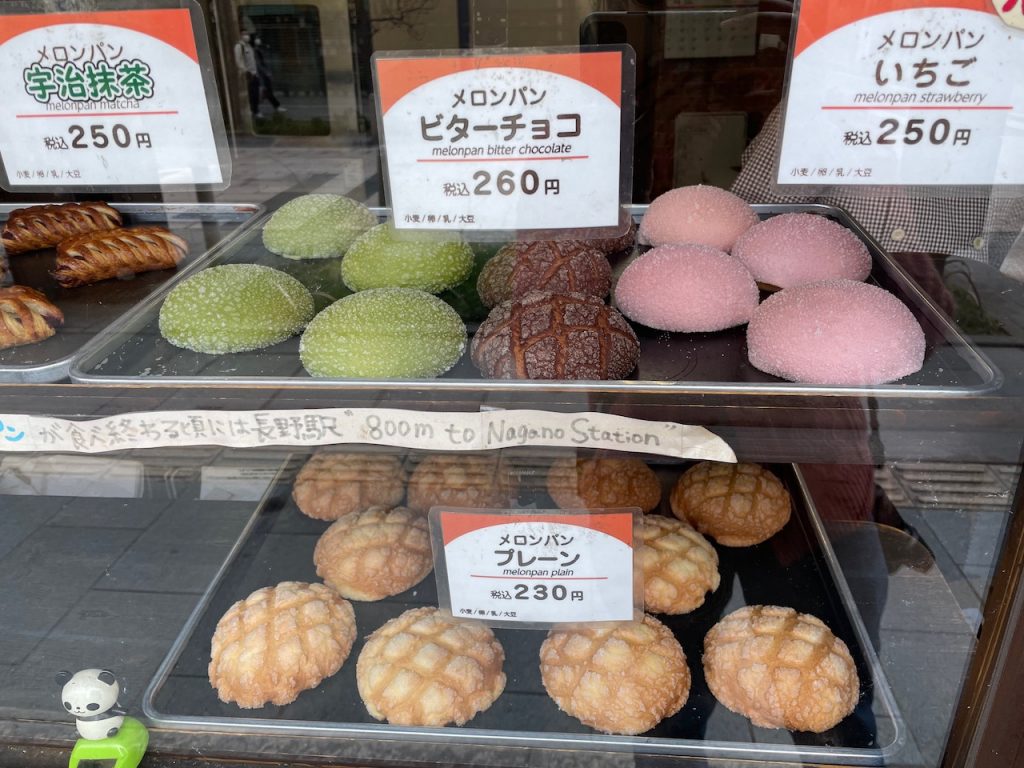
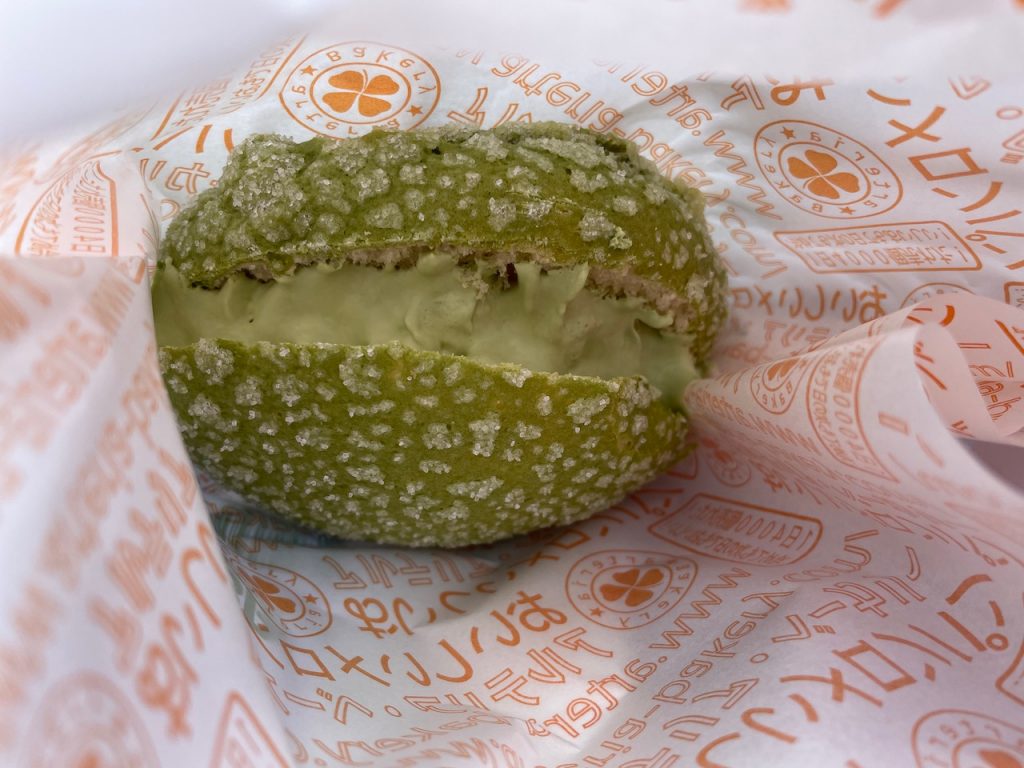
The camera shop guy fortunately had a lens cap for me. He was so worried about the lens cap brand mismatching the camera. I told him I didn’t care so long as the lens was protected! And it was just 200 yen. Easy peasy. And now I have a cannon-looking sony chimera beast.
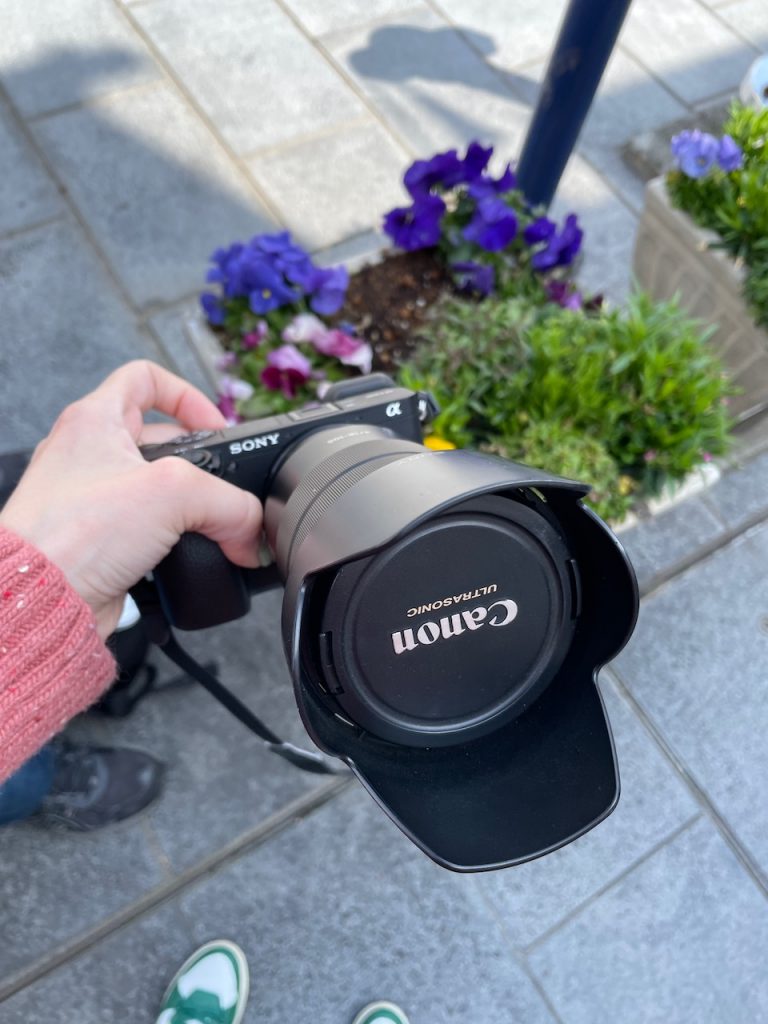
We pass Donki on the way back and Rhett says “well don’t you want to go to Donki for candy?” Yes. I do. We enter the chaos. I knew he would love it. Another Donki fan has been made.
Our final Nagano meal was Omu rice (omelette rice). This is a staple of Japanese comfort food to me, and I would be shocked if you found one at a Japanese restaurant outside Japan. It’s generally made by being a random I-have-leftovers meal where you make fried rice, chuck an omelette on it, and top it with ketchup or curry or whatever you have lying around.
In the reviews for this restaurant, all the Japanese people complain about how expensive it is for the portion size. The foreigners love it. I ignore the fact that it says it’s 4 eggs on the menu and we order a medium. The lady brings us the most gigantic omu rice I have seen in my life and laughs when I ask if she’s sure it’s not a large. Dios mio. For once, I shouldn’t trust the reviews of the locals!
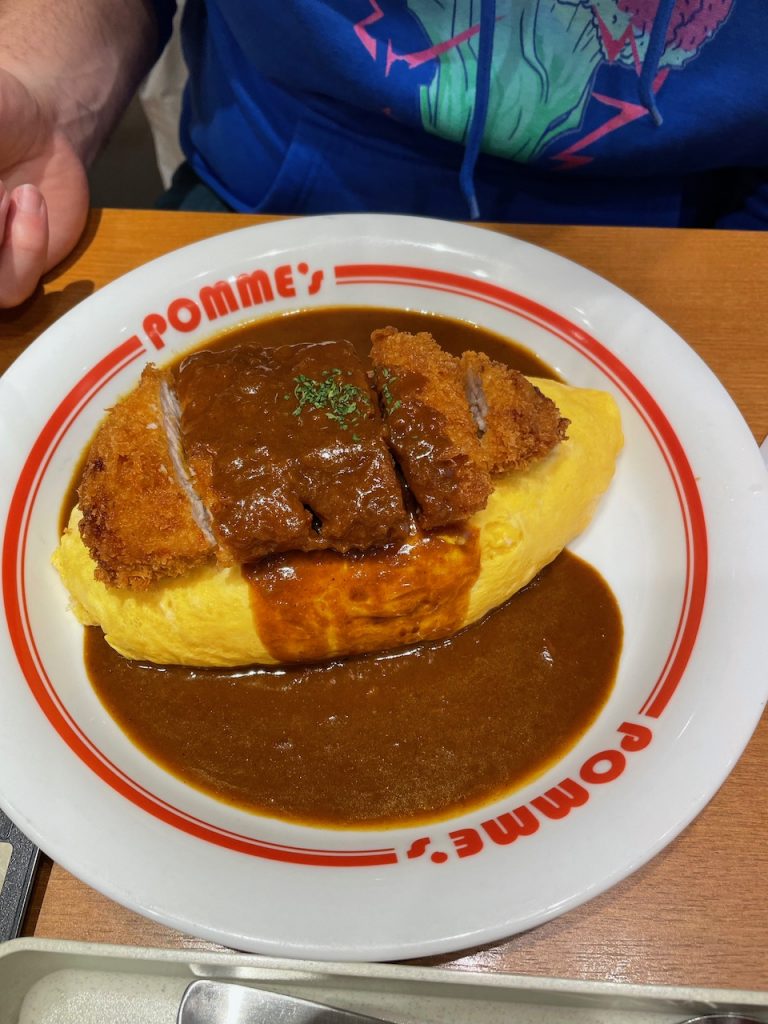
On the shinkansen to Nikko, Rhett asked me how people got around Japan before there was shinkansen. The shinkansen has never not been here, Rhett. Amaterasu let it out when she left her cave and it was a jealously-guarded national secret until 1964.
